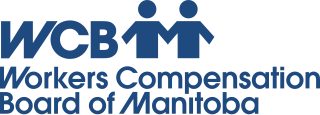
Workers' compensation or workers' comp is a form of insurance providing wage replacement and medical benefits to employees injured in the course of employment in exchange for mandatory relinquishment of the employee's right to sue his or her employer for the tort of negligence. The trade-off between assured, limited coverage and lack of recourse outside the worker compensation system is known as "the compensation bargain.” One of the problems that the compensation bargain solved is the problem of employers becoming insolvent as a result of high damage awards. The system of collective liability was created to prevent that and thus to ensure security of compensation to the workers.

Sir William Ralph Meredith, was a Canadian lawyer, politician and judge. He served as Leader of the Ontario Conservatives from 1878 to 1894, Chancellor of the University of Toronto from 1900 until his death, and Chief Justice of Ontario from 1913 until his death. Through his principles, known as the "Meredith Principles", he is regarded as the founding father of the Workers' Compensation System in Ontario, the impact of which was felt throughout Canada and the United States.

Elizabeth Witmer is a former Deputy Premier of Ontario, Canada. She was a member of the Legislative Assembly of Ontario from 1990 until 2012, representing Waterloo North and later Kitchener—Waterloo as a member of the Progressive Conservative Party.
In its broadest sense, no-fault insurance is any type of insurance contract under which the insured party is indemnified by their own insurance company for losses, regardless of the source of the cause of loss. In this sense, it is similar to first-party coverage. The term "no-fault" is most commonly used in the United States, Australia, and Canada when referring to state or provincial automobile insurance laws where a policyholder and their passengers are reimbursed by the policyholder's own insurance company without proof of fault, and are restricted in their right to seek recovery through the civil-justice system for losses caused by other parties. No-fault insurance has the goal of lowering premium costs by avoiding expensive litigation over the causes of the collision, while providing quick payments for injuries or loss of property.
Liability insurance is a part of the general insurance system of risk financing to protect the purchaser from the risks of liabilities imposed by lawsuits and similar claims and protects the insured if the purchaser is sued for claims that come within the coverage of the insurance policy.

English tort law concerns the compensation for harm to people's rights to health and safety, a clean environment, property, their economic interests, or their reputations. A "tort" is a wrong in civil law, rather than criminal law, that usually requires a payment of money to make up for damage that is caused. Alongside contracts and unjust enrichment, tort law is usually seen as forming one of the three main pillars of the law of obligations.

The Accident Compensation Corporation (ACC) is the New Zealand Crown entity responsible for administering the country's no-fault accidental injury compensation scheme, commonly referred to as the ACC scheme. The scheme provides financial compensation and support to citizens, residents, and temporary visitors who have suffered personal injuries.

Tort reform consists of changes in the civil justice system in common law countries that aim to reduce the ability of plaintiffs to bring tort litigation or to reduce damages they can receive. Such changes are generally justified under the grounds that litigation is an inefficient means to compensate plaintiffs; that tort law permits frivolous or otherwise undesirable litigation to crowd the court system; or that the fear of litigation can serve to curtail innovation, raise the cost of consumer goods or insurance premiums for suppliers of services, and increase legal costs for businesses. Tort reform has primarily been prominent in common law jurisdictions, where criticism of judge-made rules regarding tort actions manifests in calls for statutory reform by the legislature.

The Workers Compensation Board of Manitoba (WCB) is an agency of the Government of Manitoba that provides a system for workplace injury and disability insurance for workers and employers of Manitoba, paid for by employers.
The Ohio Bureau of Workers' Compensation provides medical and compensation benefits for work-related injuries, diseases and deaths. It was founded in 1912. With assets under management of more than $29 billion, it is the largest state-operated and second largest overall provider of workers’ compensation insurance in the United States.
German Statutory Accident Insurance or workers' compensation is among the oldest branches of German social insurance. Occupational accident insurance was established in Germany by statute in 1884. It is now a national, compulsory program that insures workers for injuries or illness incurred through their employment, or the commute to or from their employment. Wage earners, apprentices, family helpers and students including children in kindergarten are covered by this program. Almost all self-employed persons can voluntarily become insured. The German workers' compensation laws were the first of their kind.
Advocates for Injured Workers (AIW) is a student legal clinic operating in Toronto and affiliated with the University of Toronto Faculty of Law. This clinic is supervised by the Industrial Accident Victims' Group of Ontario (IAVGO) - itself a community legal clinic funded by Legal Aid Ontario.
The WorkCover Authority of New South Wales was a New South Wales Government agency established in 1989. The agency created regulations to promote productive, healthy and safe workplaces for workers and employers in New South Wales. The agency formed part of the Safety, Return to Work and Support Division established pursuant to the Safety, Return to Work and Support Board Act, 2012 (NSW).

WorkSafe Victoria is the trading name of the Victorian WorkCover Authority, a statutory authority of the state government of Victoria, Australia.
Iowa Workforce Development is a government agency in the American state of Iowa, responsible for overseeing workplace safety, workers' compensation, unemployment insurance and job training services. It was formed in May 1996.
The Virginia Workers' Compensation Commission (VWC) is an agency of the U.S. state of Virginia that oversees the resolution of workers' compensation claims brought in that state, in accordance with the Virginia Workers' Compensation Act. The Commission has exclusive jurisdiction to adjudicate such claims. Its decisions may be appealed to the Virginia Court of Appeals. The Commission is led by a Senior Leadership team consisting of three Commissioners, an Executive Director and a Chief Deputy Commissioner. The Commissioners are appointed by the Virginia General Assembly and serve staggered six-year terms. Honorable Robert A. Rapaport, Honorable Wesley G. Marshall and Honorable R. Ferrell Newman currently serve as Commissioners. The Commissioners elect a Chairman for a term of three years. Commissioner Rapaport currently serves as Chairman. Ms. Evelyn McGill is the Commission’s Executive Director and Honorable James J. Szablewicz is the Commission’s Chief Deputy Commissioner. The Commission is headquartered in Richmond, Virginia, and has offices and hearing locations at various places around the state.
The Workers' Compensation Board of British Columbia, operating as WorkSafeBC, is a statutory agency that was made in 1917, after the provincial legislature put into force legislation passed in 1902. This legislation is known as the Workers Compensation Act.

The Institute for Work & Health (IWH) is an independent, not-for-profit research organization based in Toronto, Canada. Its mission is to “promote, protect and improve the safety and health of working people by conducting actionable research that is valued by employers, workers, and policy-makers.”
Workers' compensation in the United States is a primarily state-based system of workers' compensation.
EML Group is one of the oldest Australian personal injury insurers with history dating back to 1910. The service range of this company is only in Australia, with over 3,500 specialists operating in New South Wales, South Australia and Victoria. The head office of this company is in Sydney. Other branches are distributed in Brisbane in Queensland, Parramatta, Newcastle, Tweed and Gosford in New South Wales, and a South Australian branch in Adelaide.










